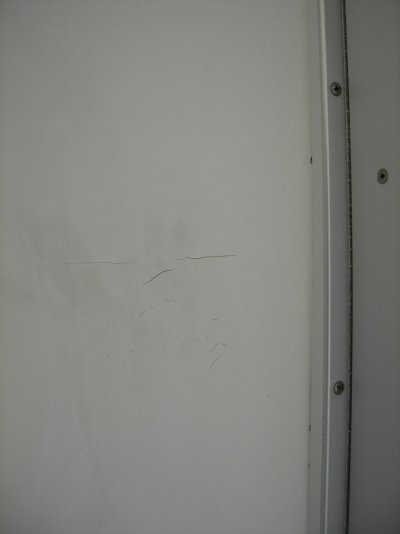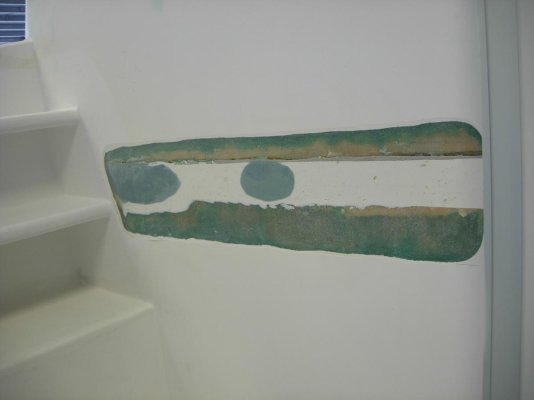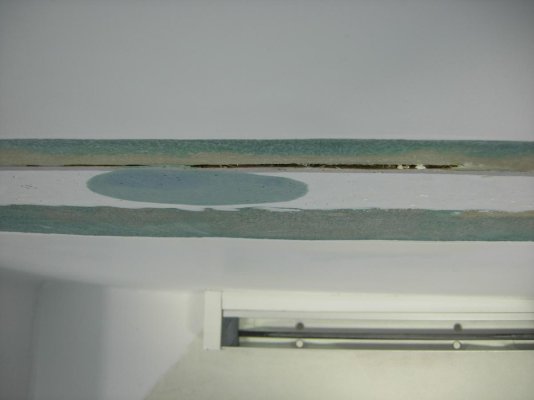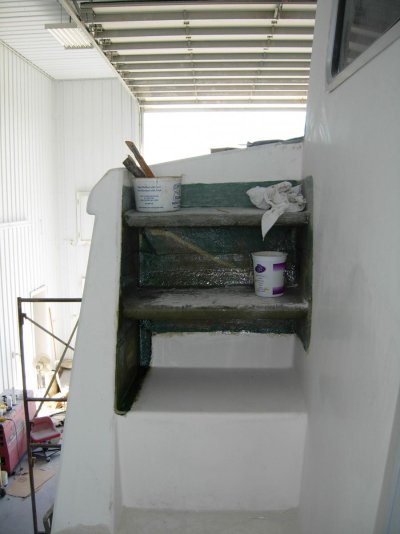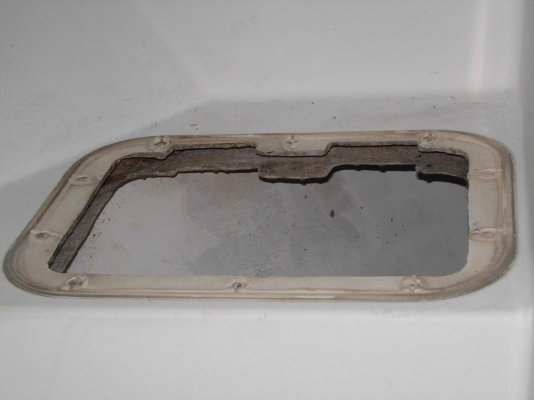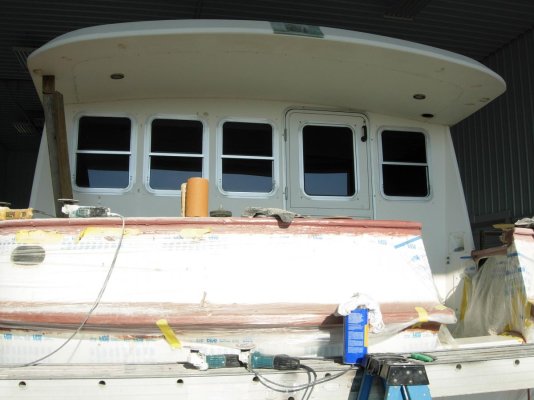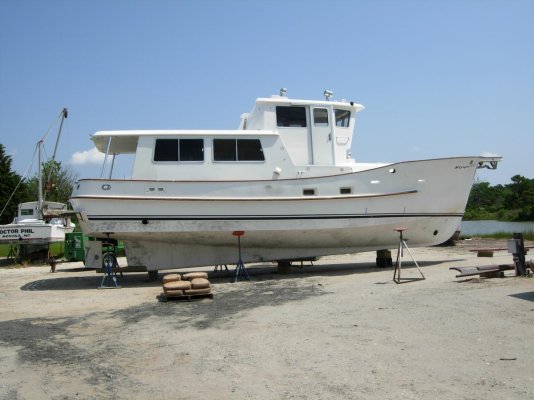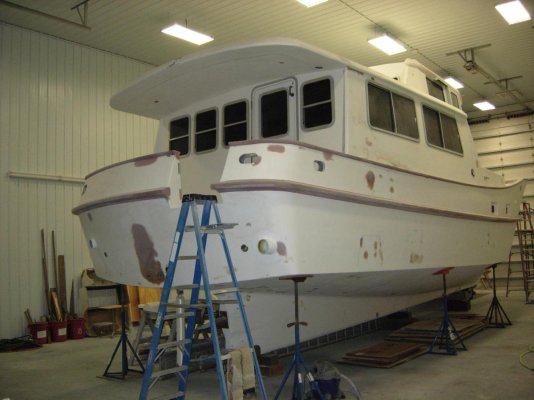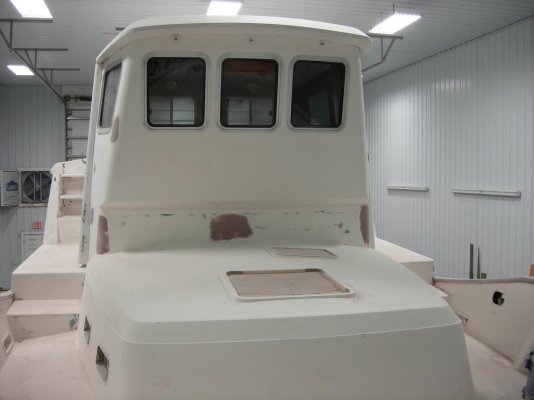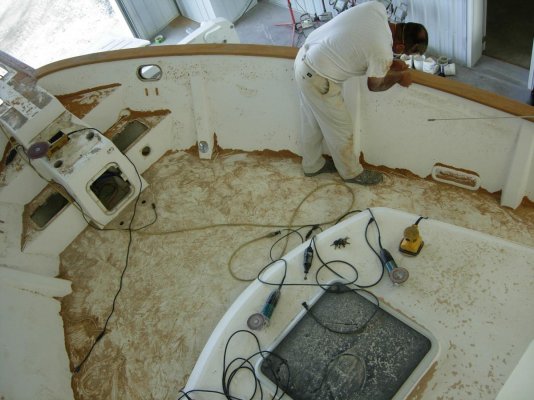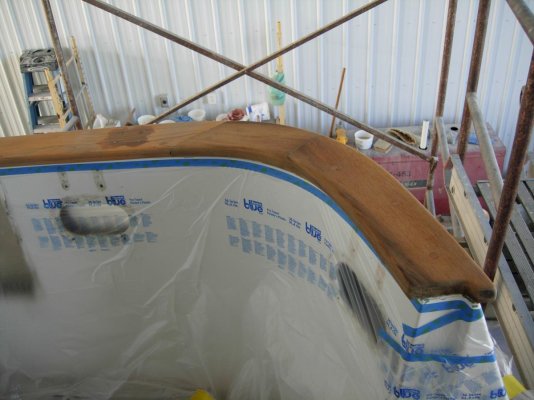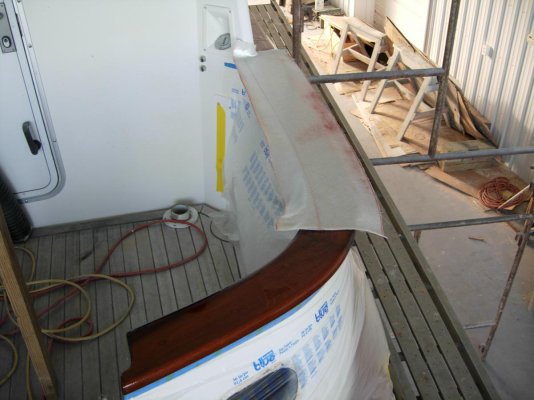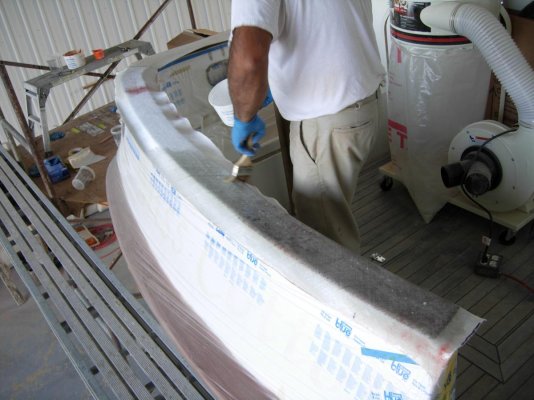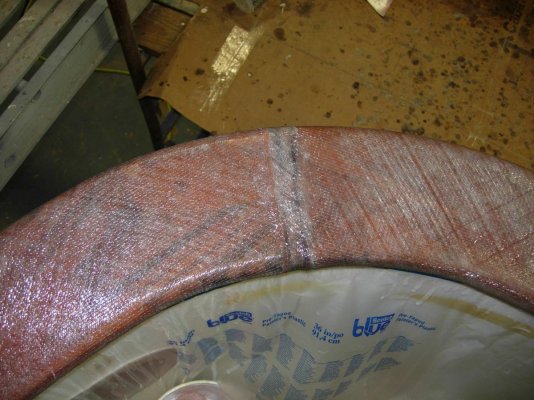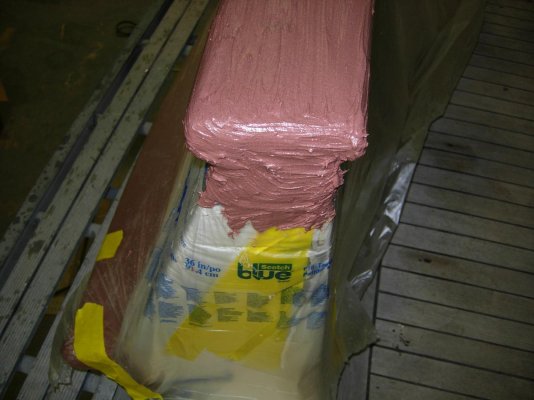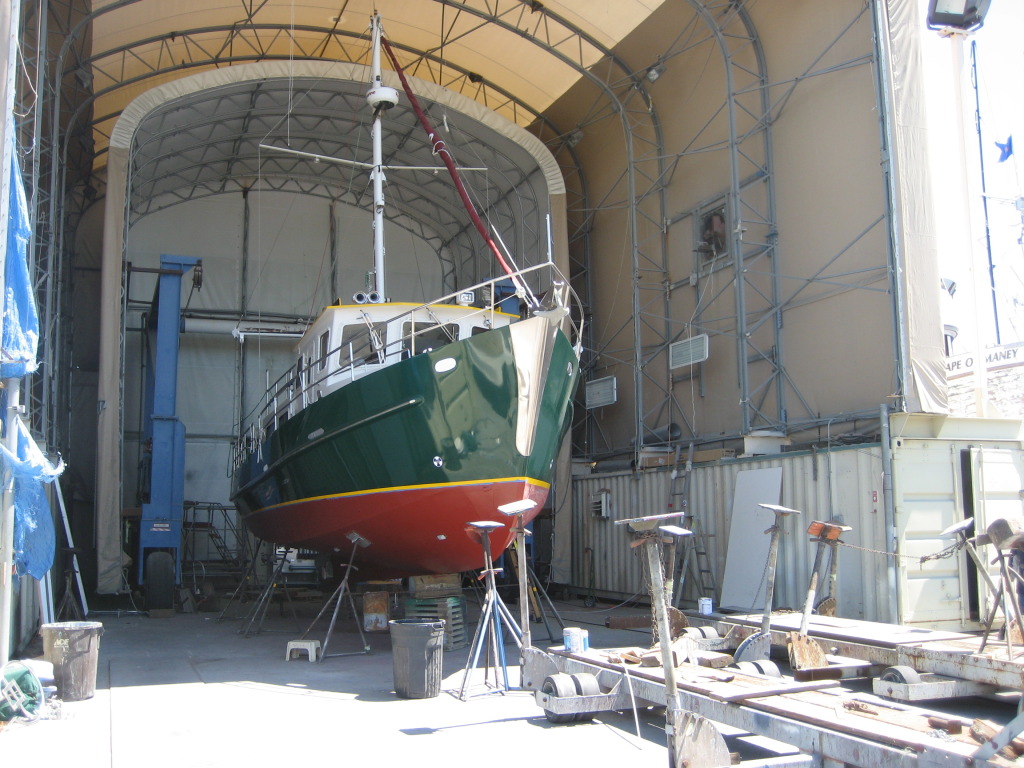O C Diver
Guru
- Joined
- Dec 16, 2010
- Messages
- 12,865
- Location
- USA
- Vessel Name
- Slow Hand
- Vessel Make
- Cherubini Independence 45
For those who aren't familiar with the term "Short Haul", it basically means your boat is being lifted out of the water (usually by a travel lift) for a short period of time to do a repair, and then put back in. The boat isn't removed from the travel lift slings. As my boat enters the 9th month of my refit project, there are a few in the yard who have been asking how the short haul is going. To which I respond, "probably copper the bottom and splash her tomorrow". Hence the name of the thread.
I'm down in Fort Myers, FL now as the boat is going through the painting process and is all sealed up. So I thought it was time to show you what Sean and I have been doing for the last 8 months.
First on my list was repowering. The engine, genset, and a bunch of stuff need to be removed. First you need to remove part of the galley and floor.


Need to remove the exhaust system, 4 8D batteries and the genset. Then remove the heat exchanger, alternator, transmission mount, and front motor hangar so that the motor would fit through the salon door and then the transom door (even smaller).

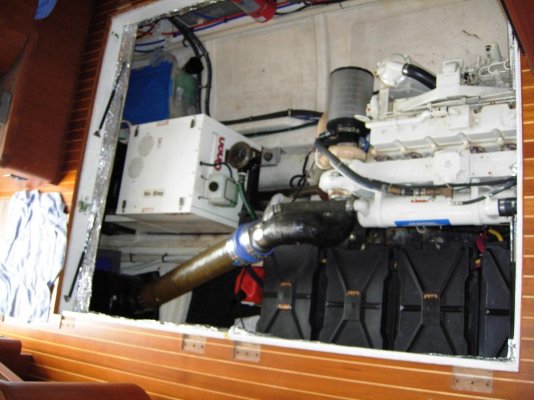
After all that stuff is out, you need to pull the engine. The boom truck was originally for setting telephone poles. It has a telescoping boom that wasn't long enough in the traditional manner. So, we picked the boat up in the travel lift and inserted the boom into the boat by backing up the travel lift.
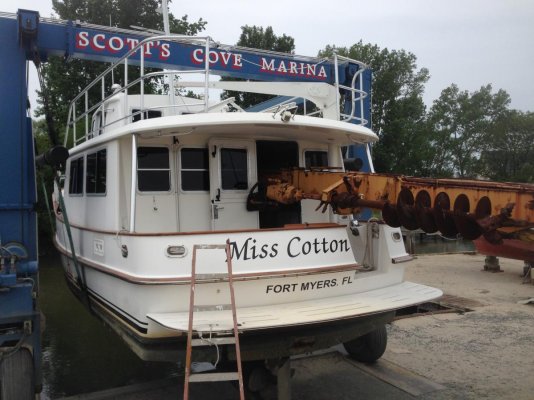
Next we hooked the engine to the boom truck...........stopped and went to lunch. No point having a panic attack on an empty stomach. Don't have pics of the motor coming out, I was a little busy. Simply, we drug it out from under the refrigerator, lifted it up, retracted the boom, and drove the travel lift forward to extract the motor with 2 coats of paint to spare on either side as it went through the transom door. What I described in the last sentence took 2 hour to do.

More to Come......
Ted
I'm down in Fort Myers, FL now as the boat is going through the painting process and is all sealed up. So I thought it was time to show you what Sean and I have been doing for the last 8 months.
First on my list was repowering. The engine, genset, and a bunch of stuff need to be removed. First you need to remove part of the galley and floor.


Need to remove the exhaust system, 4 8D batteries and the genset. Then remove the heat exchanger, alternator, transmission mount, and front motor hangar so that the motor would fit through the salon door and then the transom door (even smaller).


After all that stuff is out, you need to pull the engine. The boom truck was originally for setting telephone poles. It has a telescoping boom that wasn't long enough in the traditional manner. So, we picked the boat up in the travel lift and inserted the boom into the boat by backing up the travel lift.

Next we hooked the engine to the boom truck...........stopped and went to lunch. No point having a panic attack on an empty stomach. Don't have pics of the motor coming out, I was a little busy. Simply, we drug it out from under the refrigerator, lifted it up, retracted the boom, and drove the travel lift forward to extract the motor with 2 coats of paint to spare on either side as it went through the transom door. What I described in the last sentence took 2 hour to do.

More to Come......
Ted



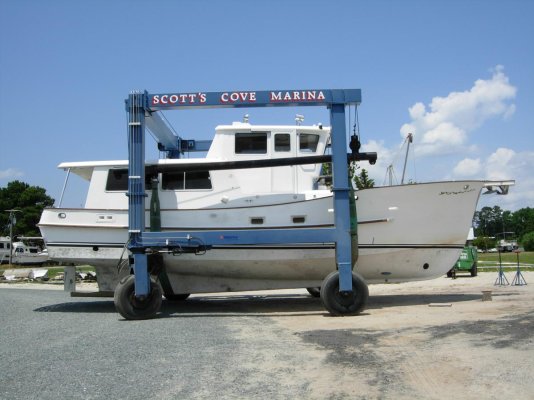

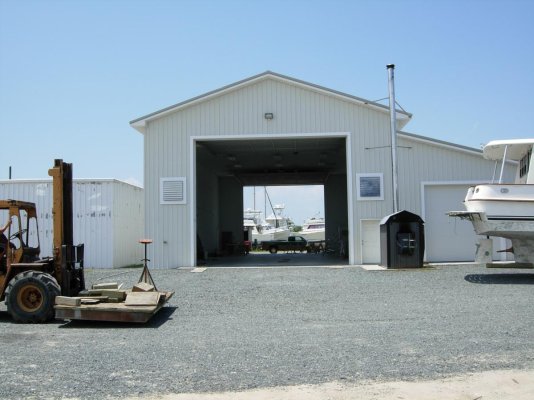
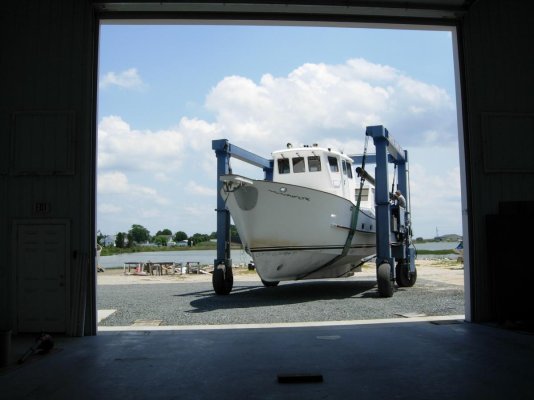








 Went down and saw Mark Milbourne (had done business with him before). Things are really slow in December and he just wanted to get rid of it, $17,800.
Went down and saw Mark Milbourne (had done business with him before). Things are really slow in December and he just wanted to get rid of it, $17,800. 



